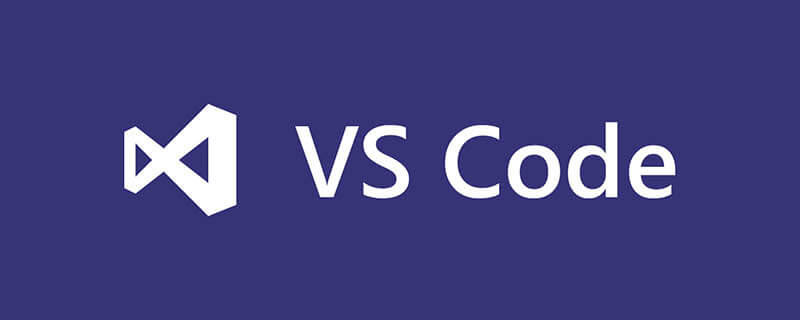 Backend Development
Backend Development C++
C++ C language multithreaded programming: a beginner's guide and troubleshooting
C language multithreaded programming: a beginner's guide and troubleshootingC Language Multithreading Programming Guide: Creating Threads: Use the pthread_create() function to specify thread ID, properties, and thread functions. Thread synchronization: Prevent data competition through mutexes, semaphores, and conditional variables. Practical case: Use multi-threading to calculate the Fibonacci number, assign tasks to multiple threads and synchronize the results. Troubleshooting: Solve problems such as program crashes, thread stop responses, and performance bottlenecks.

C Language Multithreaded Programming: A Newbie Guide and Troubleshooting
introduction
Multithreaded programming is a powerful technology that allows programs to perform multiple tasks in parallel. In C, multithreading is implemented using the POSIX threading library. This article will provide a guide to multithreaded programming for beginners in C languages and answer some common difficult questions.
Create and run threads
To create a thread, you need to call pthread_create() function. It requires three parameters:
- Thread ID : A pointer to save the newly created thread ID
- Thread properties : Specify properties such as thread stack size and priority
- Thread function : a function to be executed by a thread
The following code creates a thread called my_thread() :
#include <pthread.h>
void *my_thread(void *arg)
{
// The code executed by the thread is returned NULL;
}
int main()
{
pthread_t thread_id;
pthread_create(&thread_id, NULL, my_thread, NULL);
pthread_join(thread_id, NULL); // Wait for the thread to complete return 0;
}Thread synchronization
When multiple threads access shared resources, synchronization is required to avoid data race. This can be achieved by:
- Mutex : Restricts only one thread to access shared resources at the same time.
- Semaphore : allows multiple threads to access shared resources at the same time, but limits the number of threads to access resources.
- Condition variable : allows threads to wait for a specific condition to be satisfied.
Practical cases
The following is a practical case of using multithreading to calculate Fibonacci sequences:
#include <pthread.h>
#define NUM_THREADS 4
#define MAX_NUMBER 100
int fib_numbers[MAX_NUMBER];
void *calculate_fib_numbers(void *arg)
{
int start = (int) arg;
int end = start NUM_THREADS - 1;
for (int i = start; i <= end; i )
fib_numbers[i] = fib(i);
return NULL;
}
int main()
{
pthread_t threads[NUM_THREADS];
for (int i = 0; i < NUM_THREADS; i )
pthread_create(&threads[i], NULL, calculate_fib_numbers, (void *) (i * NUM_THREADS));
for (int i = 0; i < NUM_THREADS; i )
pthread_join(threads[i], NULL);
// Print result for (int i = 0; i < MAX_NUMBER; i )
printf("%d", fib_numbers[i]);
return 0;
}Troubleshooting
- The program crashes with the error "segment fault" : It may be that the memory area that the thread does not own. Make sure to use mutexes or other synchronization mechanisms to protect shared resources.
- Thread stops responding : It may be an infinite loop or other deadlock situation. Try to use a debugger or logging to find out the cause of the deadlock.
- Thread execution is too slow : it may be due to competition among threads or other performance bottlenecks. Try benchmarking the code and find out the slower points.
The above is the detailed content of C language multithreaded programming: a beginner's guide and troubleshooting. For more information, please follow other related articles on the PHP Chinese website!
 (超详细)VScode中配置C语言环境的方法Dec 05, 2022 pm 07:05 PM
(超详细)VScode中配置C语言环境的方法Dec 05, 2022 pm 07:05 PMVScode中怎么配置C语言环境?下面本篇文章给大家介绍一下VScode配置C语言环境的方法(超详细),希望对大家有所帮助!
 c语言中node是什么意思Jul 06, 2022 pm 03:51 PM
c语言中node是什么意思Jul 06, 2022 pm 03:51 PM在C语言中,node是用于定义链表结点的名称,通常在数据结构中用作结点的类型名,语法为“struct Node{...};”;结构和类在定义出名称以后,直接用该名称就可以定义对象,C语言中还存在“Node * a”和“Node* &a”。
 c语言怎么将数字转换成字符串Jan 04, 2023 pm 03:20 PM
c语言怎么将数字转换成字符串Jan 04, 2023 pm 03:20 PMc语言将数字转换成字符串的方法:1、ascii码操作,在原数字的基础上加“0x30”,语法“数字+0x30”,会存储数字对应的字符ascii码;2、使用itoa(),可以把整型数转换成字符串,语法“itoa(number1,string,数字);”;3、使用sprintf(),可以能够根据指定的需求,格式化内容,存储至指针指向的字符串。
 c语言开根号运算符是什么Mar 06, 2023 pm 02:39 PM
c语言开根号运算符是什么Mar 06, 2023 pm 02:39 PM在c语言中,没有开根号运算符,开根号使用的是内置函数“sqrt()”,使用语法“sqrt(数值x)”;例如“sqrt(4)”,就是对4进行平方根运算,结果为2。sqrt()是c语言内置的开根号运算函数,其运算结果是函数变量的算术平方根;该函数既不能运算负数值,也不能输出虚数结果。
 c语言数组如何初始化Jan 04, 2023 pm 03:36 PM
c语言数组如何初始化Jan 04, 2023 pm 03:36 PMC语言数组初始化的三种方式:1、在定义时直接赋值,语法“数据类型 arrayName[index] = {值};”;2、利用for循环初始化,语法“for (int i=0;i<3;i++) {arr[i] = i;}”;3、使用memset()函数初始化,语法“memset(arr, 0, sizeof(int) * 3)”。
 c语言合法标识符的要求是什么Aug 27, 2020 pm 01:47 PM
c语言合法标识符的要求是什么Aug 27, 2020 pm 01:47 PMc语言合法标识符的要求是:1、标识符只能由字母(A~Z, a~z)、数字(0~9)和下划线(_)组成;2、第一个字符必须是字母或下划线,不能是数字;3、标识符中的大小写字母是有区别的,代表不同含义;4、标识符不能是关键字。
 c语言中源文件编译后生成什么文件Nov 23, 2022 pm 07:44 PM
c语言中源文件编译后生成什么文件Nov 23, 2022 pm 07:44 PMc语言编译后生成“.OBJ”的二进制文件(目标文件)。在C语言中,源程序(.c文件)经过编译程序编译之后,会生成一个后缀为“.OBJ”的二进制文件(称为目标文件);最后还要由称为“连接程序”(Link)的软件,把此“.OBJ”文件与c语言提供的各种库函数连接在一起,生成一个后缀“.EXE”的可执行文件。
 c语言中*p和p的区别是什么Nov 29, 2022 pm 06:03 PM
c语言中*p和p的区别是什么Nov 29, 2022 pm 06:03 PM区别:1、表示的含义不同,“*p”表示此指针指向的内存地址中存放的内容,“p”表示一个指针变量的名字,指此指针变量所指向的内存地址。2、输出的格式不同,“*p”输出的一般是一个和指针类型一致的变量或者常量,“p”输出的是一个16进制数, 输出一个指针的地址。3、功能不同,“*p”是让程序去那个地址取出数据,“p”用于存放的是地址。


Hot AI Tools

Undresser.AI Undress
AI-powered app for creating realistic nude photos

AI Clothes Remover
Online AI tool for removing clothes from photos.

Undress AI Tool
Undress images for free

Clothoff.io
AI clothes remover

AI Hentai Generator
Generate AI Hentai for free.

Hot Article

Hot Tools

Dreamweaver Mac version
Visual web development tools

SublimeText3 Chinese version
Chinese version, very easy to use

SAP NetWeaver Server Adapter for Eclipse
Integrate Eclipse with SAP NetWeaver application server.

Safe Exam Browser
Safe Exam Browser is a secure browser environment for taking online exams securely. This software turns any computer into a secure workstation. It controls access to any utility and prevents students from using unauthorized resources.

VSCode Windows 64-bit Download
A free and powerful IDE editor launched by Microsoft





